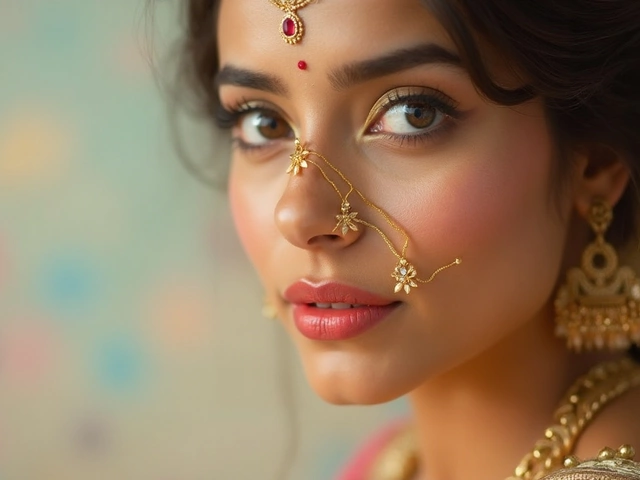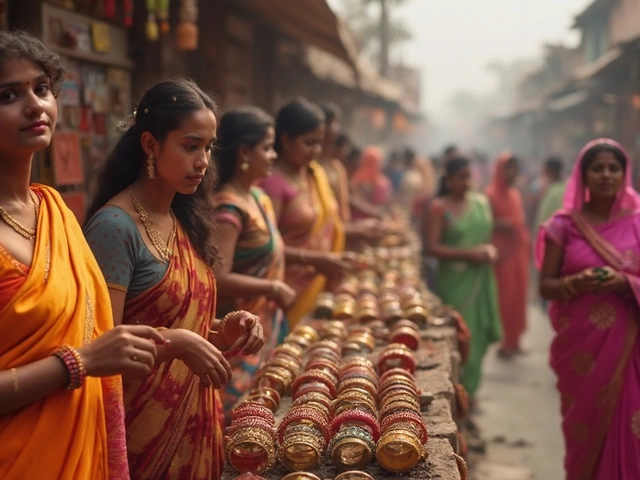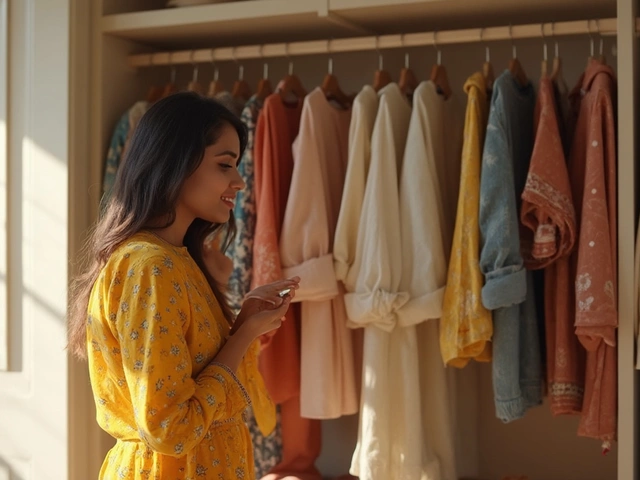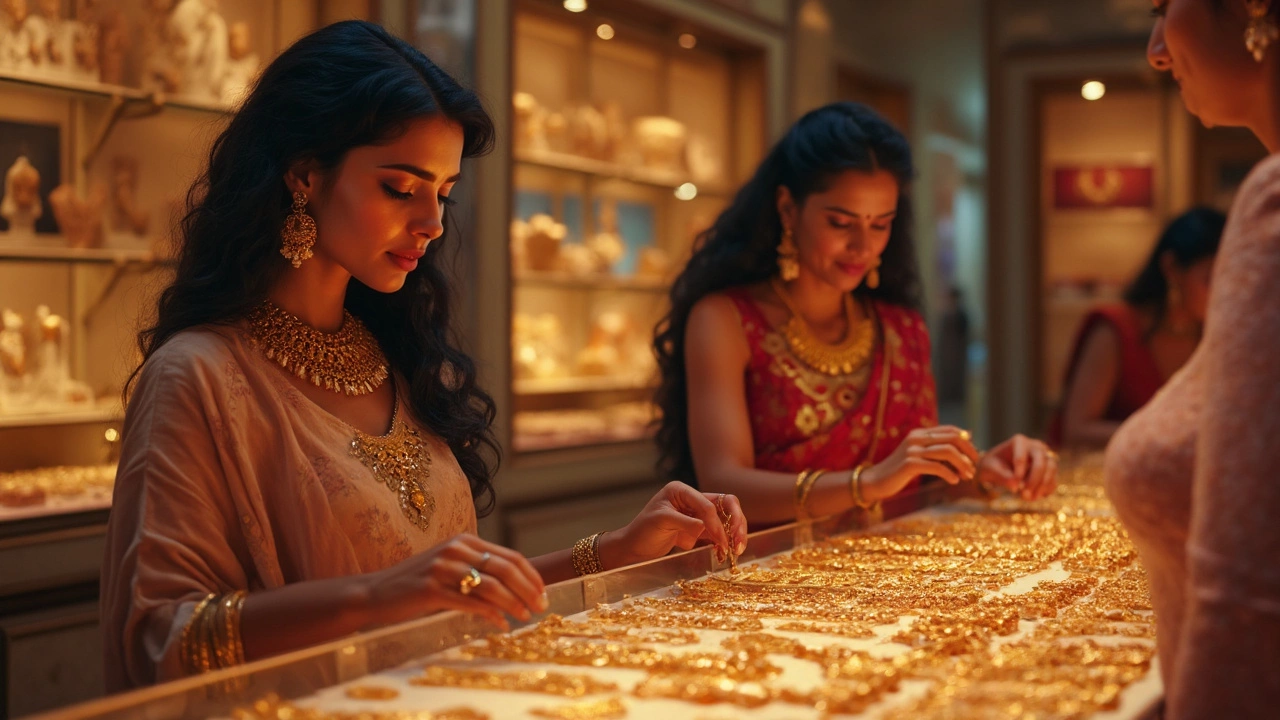
If you think all gold jewelry looks the same, have another look next time you stroll through a jewelry store. There's a real mix—classic yellow, cool white, and trendy rose gold. But which one is actually the most popular?
Jewelry designers and sellers track these trends almost obsessively because they know what people wear says a lot about what’s in fashion. The top color isn’t just about looks; it’s tied to everything from tradition to influencers to what matches your skin tone best. Knowing the most popular gold color helps you make smarter choices, whether you’re eyeing a chunky chain, an engagement ring, or your first pair of real gold hoops.
- Breaking Down Gold Colors: Yellow, White, and Rose
- Why One Gold Color Stands Out
- Popularity Through the Decades: What Changed?
- Buying Tips: How to Choose The Best Gold for You
- What’s Next: Future Favorites in Gold Jewellery
Breaking Down Gold Colors: Yellow, White, and Rose
Gold jewelry isn't one-size-fits-all—and not just because of design. The main players in the gold color game are yellow, white, and rose gold. Each gets its unique vibe from how it's made and what metals are mixed in.
Yellow gold is the classic. That bright, warm glow is what most people picture when they hear the word "gold." Jewelers usually blend pure gold with a bit of copper and silver to toughen it up—the higher the karat, the richer the yellow. You’re looking at something everyone from your grandma to pro athletes has rocked for ages.
White gold is a modern favorite. To create it, gold is mixed with pale metals like nickel, palladium, or silver. Think of white gold as gold’s answer to platinum: it gives a sleek, almost icy shine. Often, it’s coated with rhodium (a super shiny metal) to keep that brightness and fight off scratches. According to a 2024 industry snapshot by the World Gold Council, "white gold continues to see strong demand, especially for engagement rings, due to its clean, modern appearance."
"For many younger buyers, white gold hits the sweet spot of luxury without the 'old-fashioned' feel of yellow gold." — Gemma Attwood, senior jewelry buyer at Sterling Group
Rose gold is the trendsetter here. Mix gold with copper, and you get that famous blush-pink look. Rose gold started blowing up in the last decade, especially on Instagram and Pinterest. It feels softer and a little more romantic than the other options, and it can really pop against lots of different skin tones. Fun fact: Russian nobility loved it in the early 1800s, but now you’ll find it on everything from wedding bands to smartwatches.
So when you pick a gold color, you’re not just following a fad—you’re picking a mix of tradition and personal style. Each shade comes from a different combo of metals and brings its own perks.
Why One Gold Color Stands Out
Let’s be real—gold jewelry comes in three main shades: yellow, white, and rose. But when it comes to choosing, people clearly favor one over the others. If you walk into any major jewelry shop, you'll notice the most display space usually goes to gold color types that are flying off the shelves that season.
Yellow gold is the old-school favorite. It’s traditional and screams “real gold” at first glance. You’ll find a lot of wedding bands, chains, and classic earrings made with yellow gold, especially in countries like India, Turkey, and across the Middle East. In fact, the World Gold Council reported in 2024 that about 60% of gold jewelry sold globally was still yellow gold. That’s a major chunk, but it’s not the whole story.
In Western countries like the US, UK, and Australia, white gold quickly caught up after the 1990s, mostly because it looks a lot like platinum for a lower price. It became super popular in engagement rings and wedding bands. According to a 2023 survey from a major American jeweler, around 45% of bridal rings sold that year were white gold, compared to 38% for yellow gold and just 17% for rose gold.
| Gold Color | Global Popularity (2024) | Popular Uses |
|---|---|---|
| Yellow Gold | 60% | Classic jewelry, wedding bands, cultural events |
| White Gold | 30% | Engagement rings, modern pieces, men’s jewelry |
| Rose Gold | 10% | Trendy pieces, youthful designs |
What tips the scale for a gold color? Fashion trends, celebrity choices, and even social media do a lot to shape what’s hot. A celebrity choosing a white gold necklace at a big red carpet event can spark a rush at jewelry counters. At the same time, family heirlooms and cultural traditions keep yellow gold on top in a lot of parts of the world.
So if you’re thinking about making a gold jewelry purchase, look at what’s selling most where you live, what fits your skin tone, and—yeah—maybe also what celebrities are wearing. But the proof is in the numbers: yellow gold still holds the crown worldwide, but white gold is a close second, especially for modern, Western-style designs. Rose gold? Still a fun, younger pick, but not quite as big as the others.
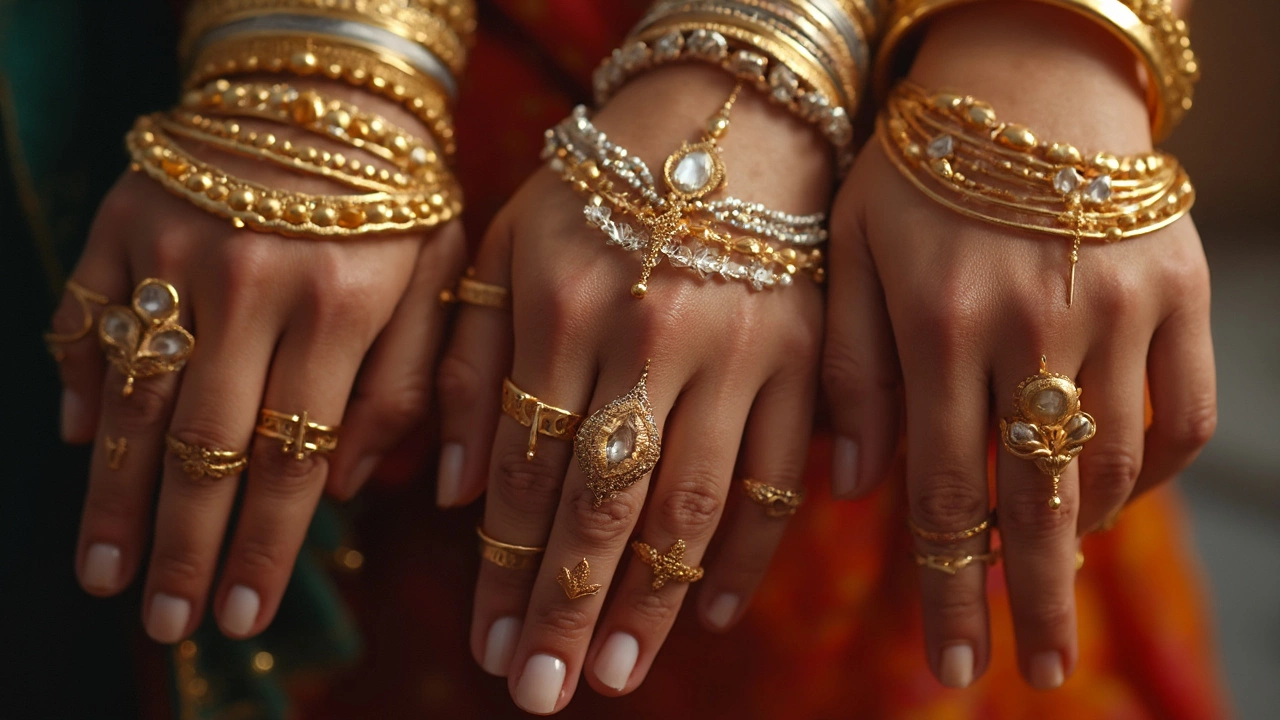
Popularity Through the Decades: What Changed?
If you look at the history of gold jewelry, you’ll notice big swings in color trends, and it’s not just about style. Social changes, tech advances, and even celebrity influence shaped what people wear.
Back in the 1950s and 60s, yellow gold was everywhere. Think of old Hollywood—Marilyn Monroe and Elizabeth Taylor absolutely rocked bright yellow gold. Families bought it for heirlooms and weddings. It was classic, easy to see, and showed status.
In the 1980s, white gold burst into the scene. White gold felt modern and matched with the silver jewelry and sleek gadgets everyone wanted. By the 1990s and early 2000s, white gold nearly took over, especially in engagement rings. It looked more low-key than yellow gold. By 2002, white gold accounted for more than 70% of engagement ring sales in the US—straight from retailer sales data.
Rose gold was hardly a blip until the 2010s. Then, seemingly overnight, it was everywhere. Social media played a huge part. Instagram and Pinterest spread photos of rose gold watches, phone cases, and, of course, jewelry. Designers started making everything from thin stackable rings to chunky bracelets in pinkish tones. Suddenly, people wanted rose gold because it was different but not too wild.
| Decade | Popular Gold Color | Driving Influence |
|---|---|---|
| 1950s-60s | Yellow Gold | Classic luxury, family tradition |
| 1980s-1990s | White Gold | Modern style, matches trend in silver jewelry |
| 2010s | Rose Gold | Social media, desire for uniqueness |
Today, there’s no single winner. Personal style, occasion, and even what’s trending on TikTok play a role. But if you check numbers from global jewelry brands in 2024, white gold still leads in wedding jewelry, while yellow and rose gold are strong in statement pieces and everyday wear.
Buying Tips: How to Choose The Best Gold for You
Choosing the right gold color for your jewelry is less about some universal rule and more about what fits your style, skin tone, and how you plan to wear it. Don’t think you have to go with what everyone else is getting—your choice should actually make you feel good and suit your daily life.
Start with your skin tone. People with warm undertones often find yellow gold super flattering, while those with cool undertones can pull off white gold better. If you aren’t sure where you land, look at the veins on your wrist: green-ish hints usually mean warm undertones; blue or purple suggests cool.
- Match your style: If you like vintage looks, yellow gold is classic. For a modern vibe, go for white gold. Trendy types are loving rose gold lately—it feels younger and fresh.
- Think about durability: Yellow and white gold are both good for everyday wear, but white gold’s rhodium plating adds an extra layer of scratch resistance. Rose gold is actually the toughest of the three because copper (used for its color) is strong.
- How about allergies? If you’ve had issues with nickel before, ask about the alloy mix. White gold sometimes uses nickel, so hypoallergenic options are best for sensitive skin.
- Consider care and upkeep: White gold will need rhodium re-plating every so often to keep its shiny look. Yellow and rose gold need less maintenance—just the usual cleaning.
Here’s a quick stats table that helps make the call:
| Gold Color | Great For | Skin Tone | Care Needs |
|---|---|---|---|
| Yellow Gold | Classic, vintage, heirloom pieces | Warm undertones | Low—just regular cleaning |
| White Gold | Modern, engagement rings | Cool undertones | Needs rhodium plating |
| Rose Gold | Trendy, younger styles | Every skin tone (universal) | Least upkeep |
Here’s one more tip: try on different gold colors in natural light and snap a pic. Sometimes what looks best in a jewelry store’s bright lights is different once you get outside. Trust what feels right, not just what’s popular this season.
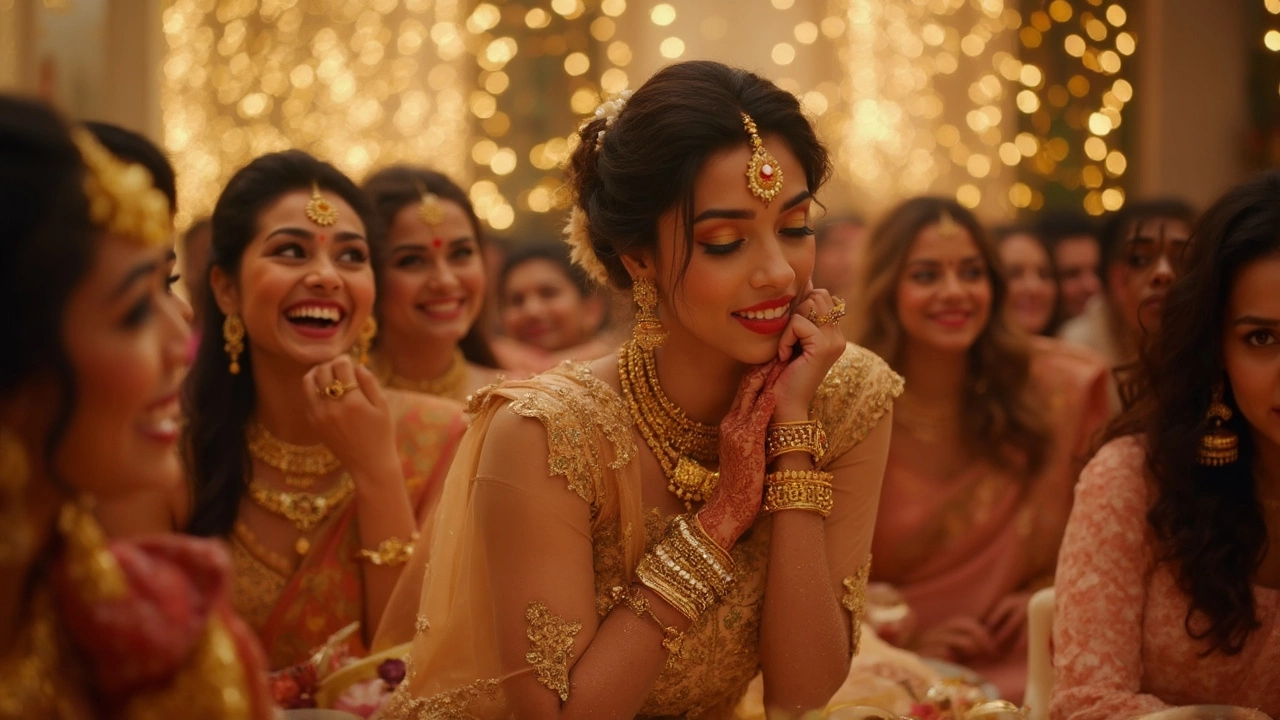
What’s Next: Future Favorites in Gold Jewellery
The gold jewelry scene is changing faster than most people realize. If you’re picking out pieces now and want them to stay cool in a year or two, it’s worth knowing what’s likely to be big soon. A lot of what’s about to trend is thanks to what’s happening online, what young shoppers want, and which celebs or designers are mixing things up.
First up, expect to see even more mixing of gold colors. People aren’t sticking to just one shade anymore—the ‘two-tone’ or even ‘triple-tone’ looks are taking off. Think bracelets with stripes of yellow, white, and rose gold all in one design. These combos make it easier to layer or match with what you already own, and they land well on every skin tone.
There’s also a shift to unusual gold shades. Blackened gold, champagne gold, and green gold are starting to pop up, especially in indie designer lines and on Instagram. They stand out in a crowd, and younger buyers love that custom feel.
Sustainability is driving change, too. Gold recycled from old phones or ethical mining has become a selling point. Buyers are checking for these badges more than ever—especially Gen Z.
| Gold Color | Popularity Growth (2024-2025) | Main Buyer Age Group |
|---|---|---|
| Mixed Tones | +32% | 18–35 |
| Rose Gold | +19% | 25–40 |
| Blackened Gold | +23% | 21–29 |
| Champagne Gold | +14% | 34–50 |
Wearability still matters. Lighter, chunkier chains are set to stick around because they’re practical and suit all genders. Modular pieces—where you swap out charms or layers—are also grabbing attention. They let you tweak your gold look each day without needing a new piece for every occasion.
- Don’t be afraid to mix gold tones—there are no more hard rules about matching.
- Look for jewelry that comes from recycled or verified ethical sources if that matters to you.
- Try new shades like blackened or champagne gold in small, affordable pieces first if you’re unsure.
No one’s saying classic yellow or white gold is done—they’ll always be around. But for future-proof buying, keep an eye on those bold, blended looks. They’re not just a trend—they’re how people want to wear gold now.

